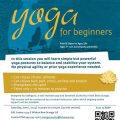Understanding the Core of Yoga: Principles, Practice, and Perspectives
Yoga is far more than physical exercise; it is a multidimensional practice that integrates the mind, body, and spirit. Over the years, the Western perception of yoga has been largely focused on its physical aspects, but this practice, rooted in ancient Indian traditions, encompasses philosophy, mindfulness, and ethics. In this article, we will explore the deeper meanings of yoga, tracing its historical roots, analyzing its current applications, and examining its broader implications for modern life.
Introduction
Yoga is often misinterpreted as merely a fitness regimen, while its holistic purpose is to cultivate harmony between the individual self and the universe. This multifaceted system incorporates physical postures (asanas), breathing techniques (pranayama), meditation, and ethical guidelines. To fully appreciate what yoga represents, we need to move beyond its surface-level representation and delve into its spiritual, philosophical, and practical dimensions.
Key Concepts
The foundation of yoga can be broken down into several essential components, which serve as pillars for the practice:
- Asanas: The physical postures, often seen as the most accessible entry point into yoga, are designed to strengthen and align the body.
- Pranayama: Breathing exercises that control the flow of energy (prana) within the body.
- Meditation (Dhyana): A practice aimed at focusing the mind and achieving mental clarity.
- Yamas and Niyamas: Ethical guidelines and personal disciplines that govern moral conduct and individual behavior.
- Samadhi: The ultimate goal of yoga, representing the union of the self with the universal consciousness, resulting in a state of bliss and enlightenment.
Each of these elements serves a specific purpose, but they are meant to work together holistically, guiding practitioners toward self-awareness, peace, and balance.
Historical Context
Yoga’s origins can be traced back to ancient India, where it was first mentioned in the Rig Veda, a collection of hymns dating back over 3,000 years. It was further developed in the Upanishads and the Bhagavad Gita, which explore the deeper metaphysical and ethical dimensions of the practice. The Yoga Sutras of Patanjali, written around 400 CE, serve as one of the most comprehensive texts on yoga philosophy, outlining the eightfold path, or Ashtanga Yoga.
Table 1: Historical Milestones in Yoga
| Period | Milestone | Significance |
|---|---|---|
| Pre-3000 BCE | Yoga mentioned in Vedic texts | Earliest references to spiritual and physical practices |
| 500 BCE | Bhagavad Gita | Philosophical development of yoga as a path to self-realization |
| 400 CE | Yoga Sutras of Patanjali | Foundational text that formalizes the eightfold path of yoga |
| 19th Century | Swami Vivekananda introduces yoga to the West | First wave of yoga’s globalization |
| 20th Century | Popularization of modern Hatha Yoga | Focus on asanas and physical postures in Western culture |
Current State Analysis
Today, yoga is practiced by millions worldwide, yet its mainstream portrayal often emphasizes physicality over its deeper spiritual and philosophical dimensions. The wellness industry has commodified yoga, frequently reducing it to a form of exercise or stress relief, sidelining its ethical and meditative practices. This shift has led to misconceptions about yoga’s true purpose, distilling it into an activity devoid of its original context.
There is also a growing body of scientific research validating the physiological and psychological benefits of yoga, particularly in stress management, mental health, and chronic illness treatment. These findings, while important, often focus on yoga’s utility rather than its spiritual depth.
Practical Applications
While yoga has ancient roots, it remains highly adaptable to modern needs. Some practical applications include:
- Mental Health: Yoga-based therapies are used in the treatment of anxiety, depression, and PTSD, with proven efficacy in promoting mental resilience and emotional balance.
- Physical Health: Regular practice improves flexibility, strength, and cardiovascular health, with positive effects on conditions like hypertension, arthritis, and back pain.
- Mindfulness and Productivity: Yoga’s meditative components help in enhancing focus, reducing burnout, and improving overall workplace efficiency.
However, practitioners must engage with yoga holistically to experience its full benefits rather than focusing solely on its physical or therapeutic aspects.
Case Studies
Case Study 1: Integrating Yoga in Schools
A pilot program introduced yoga in public schools to help students manage stress, improve focus, and promote emotional well-being. The results showed a measurable reduction in behavioral issues, increased attention span, and improved emotional regulation among students.
Case Study 2: Corporate Wellness Programs
A large tech company implemented a daily yoga program for its employees to combat workplace stress and burnout. Over six months, participants reported improved job satisfaction and mental health, leading to higher productivity and reduced turnover.
Table 2: Benefits of Yoga in Different Contexts
| Context | Outcome |
|---|---|
| Schools | Better emotional regulation, focus, and behavioral improvements |
| Workplaces | Increased productivity, reduced stress, enhanced job satisfaction |
| Healthcare | Improved mental health, management of chronic illness, and overall well-being |
Stakeholder Analysis
Yoga’s resurgence and transformation have implications for various stakeholders, including:
- Traditional Practitioners: Concerned with preserving the authenticity of yoga amidst its commercialization.
- Wellness Industry: Sees yoga as a profitable commodity, often emphasizing marketable aspects such as fitness and relaxation.
- Health Professionals: Utilize yoga for its therapeutic benefits, integrating it into mainstream healthcare.
- General Practitioners: Engage with yoga primarily for its physical benefits but often overlook its deeper philosophical teachings.
Implementation Guidelines
To ensure that yoga is practiced authentically and effectively, the following guidelines are recommended:
- Encourage a holistic approach that balances physical, mental, and spiritual practices.
- Ensure that yoga instructors are properly trained in both the physical and philosophical aspects of the practice.
- Promote the ethical guidelines of yoga, such as Yamas and Niyamas, in addition to physical postures.
- Encourage collaboration between healthcare providers and yoga practitioners to incorporate therapeutic aspects in a more integrative manner.
Ethical Considerations
As yoga becomes more widespread, ethical considerations surrounding its commodification, cultural appropriation, and the integrity of its teachings have surfaced. Critics argue that yoga is often stripped of its cultural and spiritual context when practiced in the West, leading to potential disrespect for its origins.
Furthermore, the commercialization of yoga risks turning it into a luxury item, accessible only to certain socioeconomic groups, rather than a universally accessible practice. To address this, efforts should be made to provide inclusive yoga programs that respect cultural heritage while adapting to modern needs.
Limitations and Future Research
Despite its widespread appeal, yoga research is still in its infancy. There are gaps in understanding how yoga impacts different populations, and more work is needed to explore its long-term benefits across diverse demographic groups.
- Psychological Research: More longitudinal studies are required to assess the impact of yoga on mental health over extended periods.
- Accessibility: Research is needed to make yoga more inclusive for people with disabilities or limited mobility.
- Cultural Sensitivity: Future research should explore ways to practice yoga respectfully, ensuring its integrity is preserved in diverse cultural contexts.
As interest in yoga continues to grow, ongoing research will play a crucial role in deepening our understanding of its multifaceted benefits while addressing its limitations.
Expert Commentary
The true essence of yoga goes beyond postures and breathing exercises. While its physical benefits are undeniable, what truly sets yoga apart is its potential to transform the mind and spirit. Experts agree that when practiced holistically, yoga has the power to bring about profound change—not only in individuals but in the fabric of society as well. As we move forward, the challenge lies in maintaining the integrity of yoga while adapting it to meet the demands of modern life.








